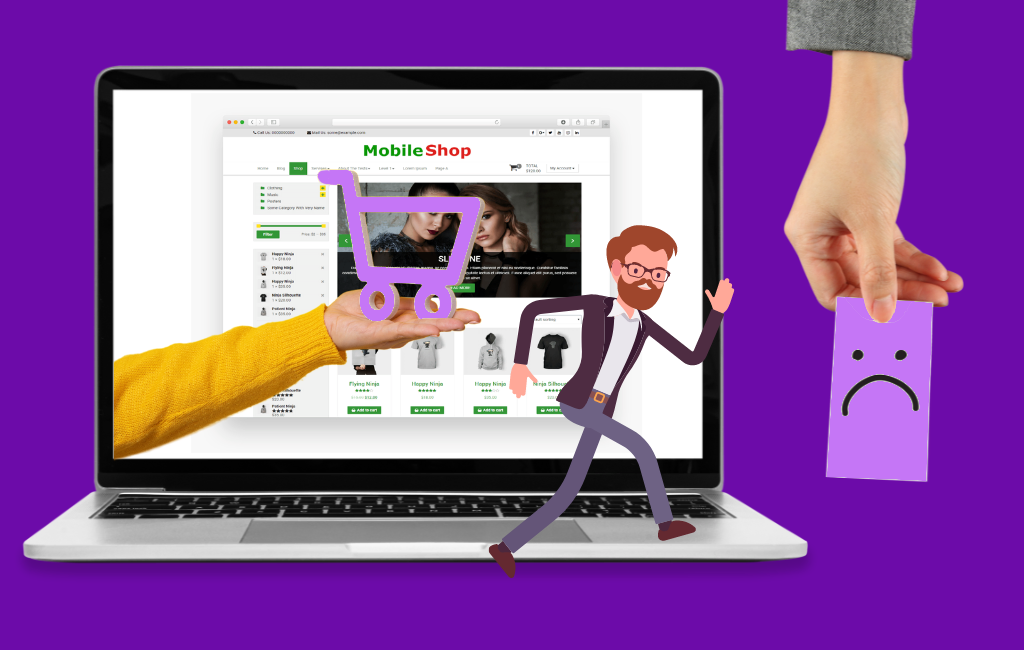
Shopping cart abandonment is one of the significant challenges e-commerce business owners face. According to reports, nearly 80% of new users abandon carts during checkout. The number can be high or low depending on the type of e-commerce business, but card abandonment remains a significant concern in the e-commerce industry.
What can e-commerce store owners do to reduce cart abandonment and increase revenue? In this article, we shared some of the most effective strategies to overcome cart abandonment.
1. Provide Accurate Product Information
Product information, such as description, photographs, category, tags, etc., is vital in conversions. Without accurate information, customers may be unable to determine a product’s quality or suitability for their needs. Besides, inaccurate product information leads to customer dissatisfaction and returns. All of this results in cart abandonment due to reduced customer confidence. Therefore, providing the correct product information is essential for a positive customer experience and loyalty.
Product images are critical because they give customers a better understanding of the features of a product. Product descriptions can help customers in many ways, including helping them understand more about a product, its specifications, and warranty details. As an e-commerce store owner, you must provide as much product information as possible to reduce cart abandonment.
2. Enable Guest Checkout
Guest checkout is an underrated and under-utilized feature of an e-commerce website. As you may know, guest checkout allows customers to purchase products without creating an account. This feature is available on all leading e-commerce platforms such as Magento, Shopify, BigCommerce, etc. While most e-commerce owners understand the importance of guest checkout, some are still reluctant to enable it for various reasons.
Many customers, especially new customers, don’t prefer creating accounts. Their primary concerns are email spam and intrusive advertising. Besides, the sign-up process adds additional steps to the checkout process. Exinent recommends providing a guest checkout option for your customers to speed up the checkout process and improve customer experience. Guest check adds value and becomes more critical for stores dependent on paid advertising to drive customers.
3. Simplify Your E-Commerce Store’s Checkout Process
Have you ever audited how many steps your potential customers take to complete a purchase? Ideally, the number of steps should be as minimum as one. A one-step checkout can make a massive difference in conversions and customer experience. It helps reduce cart abandonment by reducing the number of forms a customer has to fill up before they purchase a product.
Most e-commerce platforms have already provided controls for site owners to simplify the checkout process. That said, creating a one-step checkout right out of the bat is impossible. You may need to take the help of an e-commerce development agency or your in-house developers.
4. Highlight Payment Security During the Checkout Process
Most online shoppers have gotten used to buying their products online. Online shopping has become a norm in the last couple of decades, and people are usually not afraid of online transactions anymore. However, their fears of credit card theft and payment scams can get very real when dealing with a new e-commerce website. As a business owner, you must remember that many new potential customers that visit your website have concerns about the site’s security capabilities.
Credit card information is the prime target for cybercriminals. Most e-commerce businesses have implemented security features like PCI DSS to minimize payment risks and scams. However, many of them fail to highlight security features on critical pages of a website, including the cart and checkout pages. If you are a business owner figuring out how to reduce cart abandonment, we suggest you review your payment security and how it is conveyed to potential customers.
5. Offer Free Delivery
Higher shipping rates are one of the major reasons for cart abandonment. Shipping influences buying patterns of your customers. Nowadays, people around the world have gotten used to free shipping. However, e-commerce stores offering free shipping are highly likely to face less cart abandonment than stores that don’t offer free shipping. Providing free shipping can be very for online stores. However, for some, offering free shipping rates can be challenging.
Exinent recommends e-commerce store owners simplify their shipping policies and processes. Whether or not you can provide free shipping, make sure to make the whole shipping thing does not demotivate your customers.
6. Display Coupons
The use of display coupons on e-commerce checkout pages has many advantages. Firstly, they encourage customers to complete their purchases by offering them a discount. This strategy can help reduce cart abandonment and increase conversions. Note that coupons on the checkout page can distract users if they take them to a different page. You have to ensure that the coupons are displayed on the cart or checkout pages and that customers can use them with just one click.
A checkout page can be a great place to showcase coupons. Remember, not all e-commerce businesses rely on coupons to grow their businesses. If you are a business owner who doesn’t believe in coupons, you may try them to see if they can deter cart abandonment.
7. Offer Pre-Sales Support
One of the most common reasons for cart abandonment is the lack of information about a product. Earlier, we discussed the importance of product information. Remember that despite a clear description of products, some people may still have questions. Therefore, it is essential to provide them with a way to have their questions or concerns answered.
You can display a phone number. If a phone is not viable, you may use chat or a FAQ section. Small businesses that can’t hire a chat executive can try AI chat tools available on the market. Having a mechanism to support pre-sales will also increase customer confidence.
